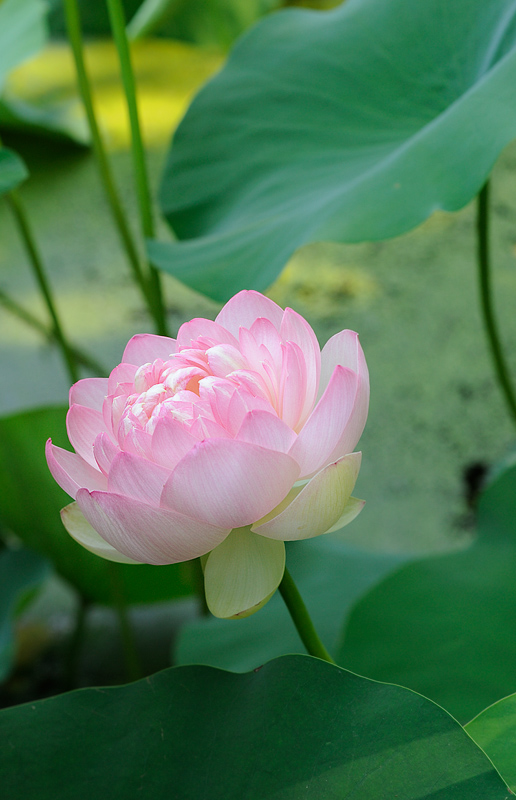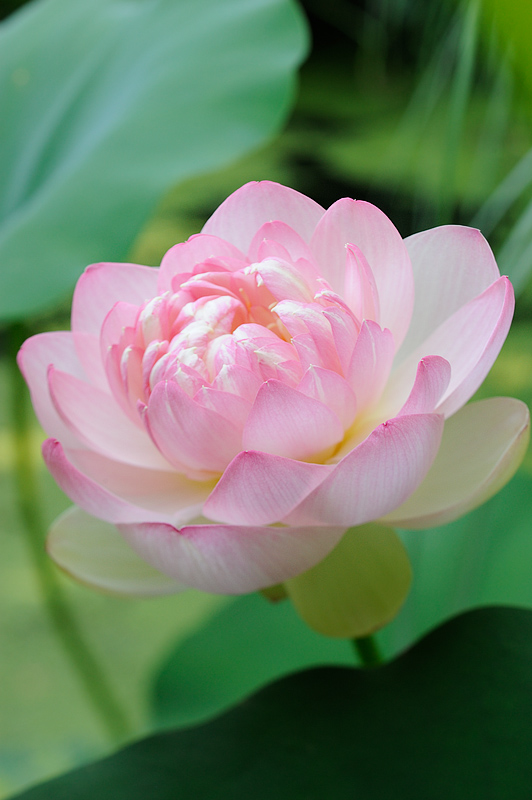I've mentioned the concept of "working the scene" in past discussions, and I've been wanting to incorporate this concept into a weekly assignment. I find it interesting that beginning photographers often recount in dismay how much effort they had to put into photographing a location, how many shots were "wasted," and how frustrating it was to only come back with one or two images worthy of their efforts. It's fascinating that more experienced photographers discuss this same phenomenon in a much more positive way. Most experienced photographers recognize that when they are exploring a location, their camera and their "photographic eye" are tools that enable them to see aspects of their subject that they might not otherwise have noticed, and to study these aspects in a process of discovery. It is only after we have gone through this process of discovery that we can effectively compose an image that conveys the essence of the subject. Many photographers call the process of exploring a location or scene with their camera in hand "working the scene."
As photographers, the ultimate goal of "working the scene" is to come away with a least one compelling image that conveys the essence of a place or subject. We normally start with the "big picture" and work our way into the scene. When I first arrive at a location, I will often walk around without my camera, looking for interesting visual aspects and trying to get a "sense of place." The more time I give myself to explore and connect to a location, the better I will be able to compose images that convey what that place is all about.
I also recognize that I although I can visualize what a scene might look like in the viewfinder or on the LCD or in print, there is no substitute for actually composing the image and examining it critically to see how all the pieces come together... exposure, balance, tonality, visual relationships, etc. Digital gives us the ability to immediately assess things such as exposure and depth of field on the LCD to determine if we need to adjust parameters and take the shot again. You will find that working from a tripod can help in this process of critical examination and "tweaking" of an image. A tripod allows us to compose an image, examine the result, and make minor adjustments in camera position in order to better position our primary subject within it's surroundings. But don't make the mistake of staying "locked down" once you have positioned your tripod. Sometimes shifting your position by just a foot or so will dramatically improve your composition. I'm sometimes surprised during our workshops when I suggest to a participant that they "come over here and look at this composition" and they instead position their tripod about four feet away from where I'm standing, it's not the same view. It might be similar, but it's not the same, and moving those four feet might make a significant difference in the overall composition.
When we talk about composition, we're talking about how elements are arranged within the image. This positioning and the visual relationships of the various elements are critically important to the success of your image. Consciously "arranging" these elements by shifting our camera position, changing focal lengths or apertures (depth of field), or adjusting the exposure (and therefore tonality) of the image is how we "create" an image instead of just recording what is there. Once you have succeeded in creating a decent composition, keep trying! There are other variations of the scene that might be more powerful, and the further you progress in your process of discovery, the more compelling your images will become. Stay until the wind picks up, or the sun sets, or your stomach starts growling so loudly you can no longer concentrate.
I submitted two Lotus Blossom images for the "In the Dirt" assignment. In the process of creating these images, I took about 70 images in about an hour's time--all primarily of the same subject. My preconceived idea of what I wanted to submit for the assignment was a "field" of water lilies progressing across the pond, but when I arrived at the pond, the lotus blossom caught my eye. Although I wandered around and photographed other images in the area, I kept coming back to the lotus blossom and "tweaking" my composition.
The image below is one of the first compositions I set up of the lotus blossom. I spent a long time taking slightly different compositions to adjust the position of the leaves in the foreground and background of the image.

Lotus Blossom (in context)
I was also "playing" with one of my favorite lenses of all time, the Nikkor 85mm Perspective Control (PC) Tilt/Shift lens. One of the unique things about this lens is the ability to tilt the front lens elements and thus tilt the focus plane so that instead of being parallel to the front of your lens, it is slanted at an angle from the feet of your tripod to the far horizon. By adjusting the angle of the tilt, the photographer can determine exactly where the plane of focus falls within the image, and therefore determine which elements are in focus and which elements will be blurred. It can be a very powerful tool, but can also add another variable to the mix that will constantly change as you adjust your camera position and focus point. Successfully photographing with this lens becomes a much more iterative process with constant adjustments to lens tilt, camera position, camera tilt, focus point, and aperture. This is a lens that demands using a tripod, otherwise the variables become almost unmanageable. Unfortunately, I was leaning way out over the pond to get this image and so had to "experiment" quite a bit in order to get the proper amount of lens tilt to achieve proper focus on the blossom and get the foreground leaves in focus at the same time. I had my left foot wedged in a crack to keep myself steady while my upper body hung out over the pond, and when my foot slipped out unexpectedly, it gave me such a jolt of adrenaline that I had trouble holding the camera still for the next few shots.

This second image is one of the last I took during the hour or so that I photographed the scene. I didn't see this composition initially, because it wasn't visible. As I explored the scene through the viewfinder and the LCD, I started to form an idea of what I wanted the background to look like. I could only achieve that background, and the positioning of the various elements, by moving several large foreground leaves out of the way. So all I needed was one hand to hold the camera, one hand to focus, one hand to adjust the lens tilt, one hand to hold the leaves out of the way, and one hand to hold myself steady as I leaned out over the pond.

Since I didn't have all those hands, I did the best I could to "prefocus" and adjust the lens tilt, and then leaned out precariously over the pond as I used my hand that wasn't holding the camera to hold the foreground leaves out of the way.

Floating
Michele commented that "the ribbon effect of the leaf on the bottom and top makes a delicate frame somehow." I appreciated that comment because it had taken a lot of effort to achieve that framing and to get the other background elements positioned exactly where I wanted them; with the right amount of "soft focus," while keeping the majority of the blossom within the (tilted) plane of focus of the lens. I ended up positioning the flower just a little closer to the right edge of the frame than I wanted to, but such is life.
At some point we transition from the "big picture" effort of "working the scene" to the detailed work of "constructing the composition." I've provided the next link as recommended reading in the past, but I wanted to leave you with these thoughts from Art Wolfe. The next time you are dismayed at the number of shots it takes, or the amount of work it takes to produce just a couple of good images, remember this perspective from Art Wolfe. "Working the scene," and "constructing the composition" are all part of the process. Experienced photographers
expect it, and come to look forward to the process of discovery that unfolds as we create our images.
Constructing the Composition, by Art Wolfe.
The assignment for the week of 21 - 27 June 2010 is "Working the Scene." I'd like to see you upload three images for the assignment. The first image should provide an overview of the overall scene, the second image should be your first "serious" attempt at a composition, and the third image should be your best image from the session. Please upload your images to the "Working the Scene" album in the Weekly Assignment Category of the gallery no-later-than Midnight, Mountain Time (GMT -07:00) on Sunday, 27 June 2010.
I'll look forward to seeing your images (and reading your tall-tales of your photography expeditions).
Keith
P.S.
Lars, I apologize for being so verbose during this assignment description. I'll try to keep it shorter in the future.